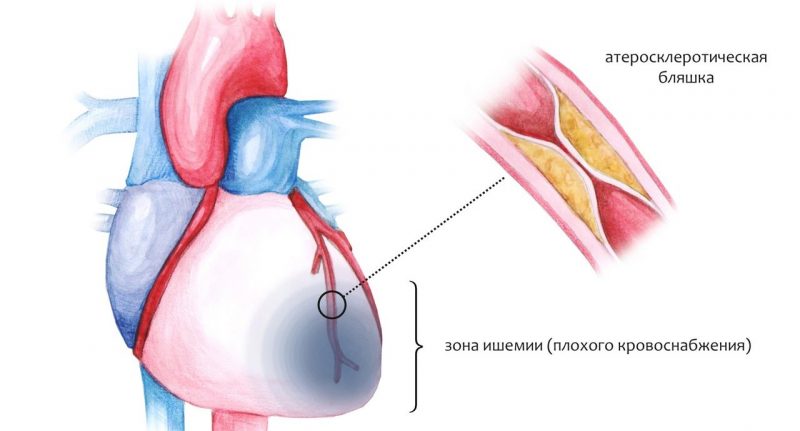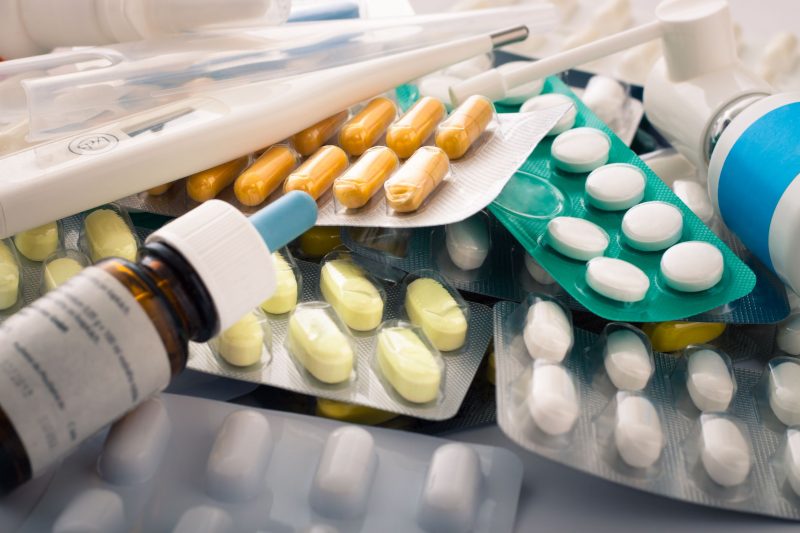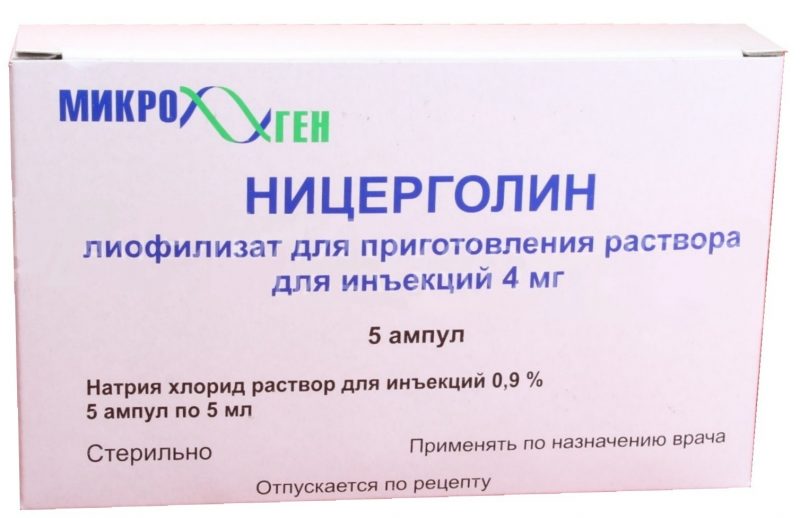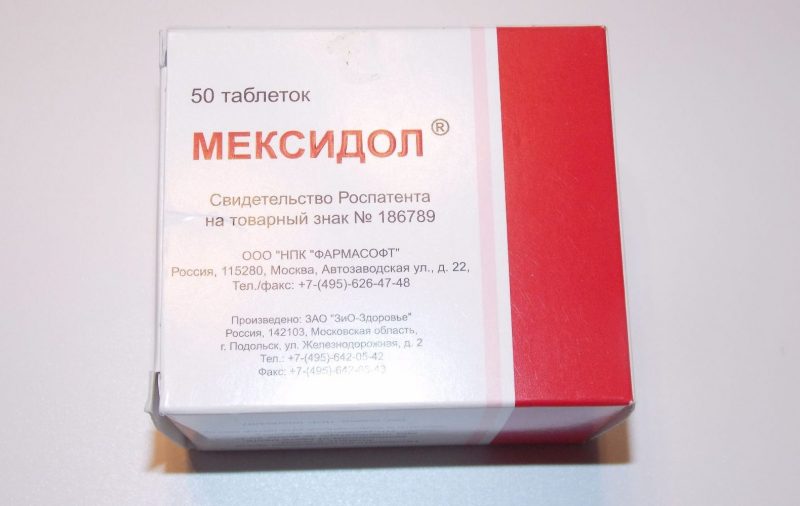Vazobral is an Italian combined pharmaceutical agent that effectively improves blood circulation in cerebral and peripheral vessels, and has a psychostimulating effect. The drug is characterized by increased safety, a small list of contraindications and rare manifestations of unwanted adverse reactions.
Material Content:
- 1 Release forms and composition
- 2 Pharmacological action, pharmacodynamics and pharmacokinetics
- 3 What helps Vazobral
- 4 Instructions for use and dosage
- 5 During pregnancy and breastfeeding
- 6 Drug interaction
- 7 Vazobral compatibility with alcohol
- 8 Contraindications, side effects and overdose
- 9 Analogues of the drug
- 10 Comparative characteristics of similar drugs
Release forms and composition
The therapeutic base of Vazobral is represented by two active substances that mutually complement and enhance the therapeutic effect of the medication: dihydroergocriptine and caffeine.
The medicine is produced in two forms:
- White round cylindrical tablets with a dividing groove and the inscription VASOBRAL. Each contains dihydroergocriptine - 4 mg, caffeine - 40 mg. Placed in cell packs of 10 units. A pack can be 10 or 30 tablets with instructions attached.
- Transparent pale yellow drug solution, poured into dark glass bottles with a volume of 50 ml. 1 ml contains: dihydroergocriptine - 1 mg, caffeine - 10 mg. In a paper bundle, along with a bottle, place the instruction and a measuring syringe.
In addition to therapeutic substances, inactive components for the shaping and preservation of the pharmaceutical product are introduced into the drug.
Pharmacological action, pharmacodynamics and pharmacokinetics
The therapeutic effect of Vazobral is determined by the properties and interaction of its two components.
Alpha-dihydroergocriptine mesyl, being a dihydrogenated derivative of ergot alkaloids, activates dopamine and serotonin receptors, inhibits adrenergic receptors 1 and 2 in the muscle fibers of blood vessels.
Due to these properties, the therapeutic substance shows the following effects:
- activates blood circulation in the cerebral vessels;
- improves cerebral energy metabolism and metabolism in brain cells;
- increases the resistance of neurons to a lack of oxygen due to its weak absorption or impaired cerebral blood supply;
- lowers the permeability of the vascular walls (transcapillary exchange) for toxins, allergens, preventing hemorrhages, retinal ruptures, and development of edema;
- with a weakened vascular tone - it exhibits a vasoconstrictor effect, with increased - prevents their narrowing;
- reduces clumping into blood clots, improving its fluidity and preventing the formation of blood clots;
increases the volume of functioning microvessels.
Caffeine improves the absorption of dihydroergocriptine, as well as:
- activates brain function;
- exciting effect on the cellular structures of the myocardium and the most important brain centers - respiratory and vasomotor, deepening and facilitating the breathing process, stimulating the contractile function of the heart;
- increases mental and physical performance;
- eliminates daytime sleepiness;
- dilates the renal vessels, providing a moderate diuretic effect;
- normalizes muscle and motor functions, increasing the excitability of the spinal structures.
Caffeine enhances and accelerates the absorption of dihydroergocriptine, due to which its highest plasma content after 8 mg is observed after 30 minutes and is 0.227 nanograms per milliliter (ng / ml).
The period for which half the received dose of a therapeutic substance is excreted from the body is less than 2 hours.
What helps Vazobral
The medicine Vazobral is prescribed as a single drug or as one of the pharmaceuticals in the combined treatment of conditions caused by impaired blood supply to tissues (ischemia) due to atherosclerosis, vascular lesions.
Basic indications for use:
- decreased mental activity, forgetfulness, distraction;
- cerebrovascular insufficiency of tissues;
- consequences of a stroke;
- dementia of various origins;
- disorders of movement, hearing, orientation, gait uncertainty, dizziness;
- vascular lesions in the retina (retinopathy) with diabetes or hypertension;
- venous insufficiency and circulatory disorders in the arms and legs (including Raynaud's syndrome);
- manifestations of vegetative-vascular dystonia - dizziness, weakness, pressure surges with changing weather and temperatures, intolerance to heat, stuffiness, insomnia, depression;
- Parkinson's disease, Meniere;
- panic attacks (fear, diarrhea, abdominal cramps, diarrhea, convulsive phenomena, a sharp increase in pressure, tachycardia, pain behind the sternum, a feeling of heat, trembling, tic);
- preconscious conditions against hormonal disruptions (menopause), after a brain infection, mental trauma, exhaustion of the nervous system;
- neurological disorders on the background of alcohol and drug poisoning;
- Excessive milk production during lactation.
Instructions for use and dosage
When developing a treatment algorithm for Vazobral, an individual approach is required, taking into account the underlying disease and the severity of its manifestations in the patient, concomitant diseases that aggravate the course of the pathology, conditions that cause adverse reactions of the drug.
Since caffeine in the composition of the drug causes some excitation of the nervous system, it is desirable The last dose of Vasobral should be limited to 16-17 hours of the day, so as not to disturb the night's sleep.
The duration of the treatment course on average can vary from 3-4 weeks to 2-3 months.It is advisable to prescribe the drug 1-2 times a year, with short courses - up to 3 times in 12 months.
Pills vazobral
Standard treatment involves taking 0.5–1 tablets of the medication with food and a small amount of water twice a day.
The development of painful manifestations with migraines is facilitated by taking 1 tablet. To prevent an attack, the doses of the medicine are determined only by a neurologist, taking into account the severity of the course and other features.
Oral solution
The solution is also taken twice a day with food, if necessary, washed down with water or tea. A single dose is 2–4 ml, which corresponds to 2–4 mg of dihydroergocriptine.
The maximum amount of dihydroergocriptine that a patient can receive in 24 hours is 10 mg (2.5 tablets or 10 ml of Vazobral solution).
Application Features:
- Patients with episodes of psychosis suffered by internal bleeding, ulceration of the mucous membrane of the esophagus, intestines, stomach, suffering from heart diseases are treated with caution by Vazobral.
- Since dihydroergocriptine affects vascular tone, with a reduced blood pressure, the medication is prescribed in a reduced dose (especially at the beginning of therapy) and with constant monitoring of blood pressure.
- You may need to adjust the dose of Vazobral downward if the patient is simultaneously receiving psychotropic drugs, drugs that lower blood pressure, and other medications based on ergot derivatives.
- Medication can cause a positive reaction in athletes in doping control tests.
- Against the background of Vazobral therapy, people performing work that require increased attention, the speed of the reaction (including surgical interventions, driving, dangerous equipment) requires special care. Dihydroergocriptine in individual patients can lower blood pressure, lead to other side effects that adversely affect such activities.
During pregnancy and breastfeeding
Studies on the possibility of using Vazobral in women awaiting delivery have not been conducted. And since the effect of dihydroergocriptine and caffeine on the embryo has not been established, and their safety has not been confirmed, no medication is prescribed for pregnant patients. It is also known that many ergot-based medications can cause uterine contractions, leading to miscarriages, although this property has not been confirmed with respect to Vasobral.
And also, the effect of the medication on the baby, into the body of which the therapeutic substances enter with breast milk, has not been studied.
Besides, found that the drug can reduce the production of breast milk.
Drug interaction
With parallel use, vazobral weakens:
- the effect of sleeping pills, sedatives, opiate painkillers;
- action of alpha-adrenergic agonists (Clonidine, Methyldopa, Xylometazoline, Tizanidine).
Vazobral enhances:
- the effect of blood-thinning indirect anticoagulants (Sinkumar, Warfarin, Dikumarin);
- hypotensive effect of drugs that lower blood pressure, including diuretics (probably a pronounced drop in pressure, loss of consciousness).
Vazobral compatibility with alcohol
Vazobral and alcohol are incompatible substances, so patients receiving this treatment should not drink drinks with ethanol. If you violate this prohibition, the risk of side effects is high. In addition, caffeine promotes the instant absorption of alcohol into the bloodstream and its promotion into the brain tissue, which will cause fast and deep intoxication with overexcitation, aggression, and tremor. A sharp drop in blood pressure and the development of a coma are also possible.
However, vazobral is used in combination therapy of alcoholism, due to its active effect on cerebral circulation, but treatment can be carried out only during the period of refusal of alcohol and under the supervision of a narcologist, who can adjust the dose at any time.
Contraindications, side effects and overdose
Contraindications:
- intolerance of both the main therapeutic substances and inactive components of the drug;
- pregnancy, breastfeeding;
- heart valve defects.
Adverse reactions that appear in 1-2 patients out of a hundred, usually at the beginning of therapy:
- dizziness, shallow sleep, headaches, overexcitation;
- skin rashes, itchy redness;
- nausea, pain in the epigastric zone;
- heart rate increase;
- decrease in blood pressure (especially in hypotensive patients).
If the therapy is long-term, with the use of high doses, in individual patients with diseases of the heart and respiratory organs may develop:
- heart defects (including regurgitation), fluid accumulation in the pericardium (outer membrane of the heart), pericarditis (inflammation of the pericardial sac), including the constrictive form;
- fluid accumulation in the pleural cavity, fibrosis (the formation of foci from scar tissue) in the lungs and pleura;
- retroperitoneal retroperitoneal fibrosis (painful urination, edema, urinary retention, lower back pain).
Signs of an overdose appear if the patient often or constantly takes more than 10 mg of the drug per day. Symptoms - increased or the appearance of unwanted effects. Among the severe manifestations: vomiting, overexcitation, respiratory depression, pain behind the sternum, weakness in the muscles, numbness in the legs and arms, cooling of the extremities, bluish tint of the skin, hearing and vision disorders, diarrhea, cramps, a sharp drop in pressure and coma.
Urgently need to stop taking Vazobral, rinse the stomach, prescribe a laxative (in the absence of diarrhea), use warming compresses on the extremities, apply infusion infusions of glucose, sodium chloride, forced diuresis (diuretics). In a hospital, solutions of Geksenal, Barbamil, Diphenhydramine are administered to relieve seizures and overexcitation.
Analogues of the drug
Drugs with the same group of therapeutic substances in the composition are not available.
Vazobrala's analogs according to the pharmacological group, which are prescribed for cerebrovascular insufficiency: Amilonosar, Nicergoline, Picamilon, Noopet, Tanakan, Bilobil-forte, Nimotop, Bravinton, Vinpocetine, Ginkgo biloba, Cinnarizine, Stugeron, Sermion.
But other active ingredients are part of these medicines, therefore they are not generic Vazobral.
Comparative characteristics of similar drugs
What is better than vazobral or mexidol? Which of the drugs will show a stronger healing effect - Cavinton or Vazobral?
Only a cardiologist or neurologist can decide which medication will work best for a particular pathology in the patient. All these drugs improve blood supply to the brain, are used in the treatment of neurology and mental disorders, vascular lesions.
But these drugs have their own therapeutic features, a pronounced focus on the elimination of specific pathologies, various contraindications and associated reactions that must be considered when choosing.
So, caffeine stimulates the functions of the nervous system, reduces the time of post-stroke recovery, prevents the release of fluid and protein compounds into the intercellular space, dilates the blood vessels of the kidneys, increasing urination. Therefore, it is precisely Vazobral that is used in rehabilitation after strokes, in diseases with spasms of the vessels of the legs, edema of tissues (including cerebral), and migraines.
Mexidol may show a more pronounced result in such conditions:
- acute oxygen starvation of brain tissue against the background of ischemia, traumatic or toxic shock;
- anxious neurotic disorders;
- convulsive manifestations, epilepsy;
- poisoning with ethanol and antipsychotic drugs.
Often, experts prescribe Vazobral and Mexidol for simultaneous administration, since these pharmaceuticals are compatible and enhance the therapeutic effect of each other. But only the doctor knows exactly what pharmaceutical action is required for a particular patient, and how the drugs will interact. With self-medication, it is easy to get an overdose or minimize the therapeutic effect.
Cavinton selectively improves blood flow in foci with impaired blood supply, helps with dizziness, unstable walking, and normalizes blood pressure. Therefore, it is often used in the complex treatment of hypertension and vascular eye diseases. But unlike Vazobral, the drug did not prove active in the effects of strokes.






















